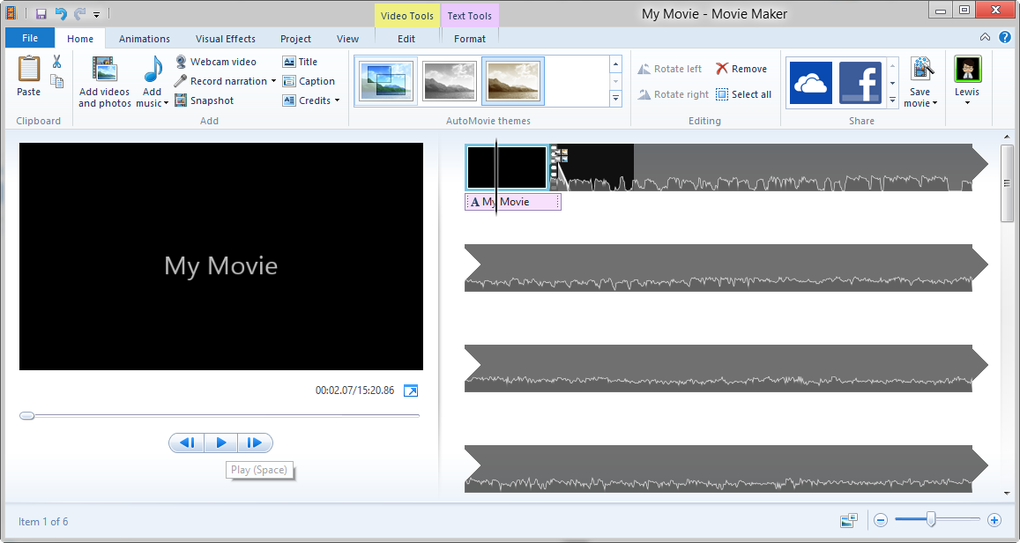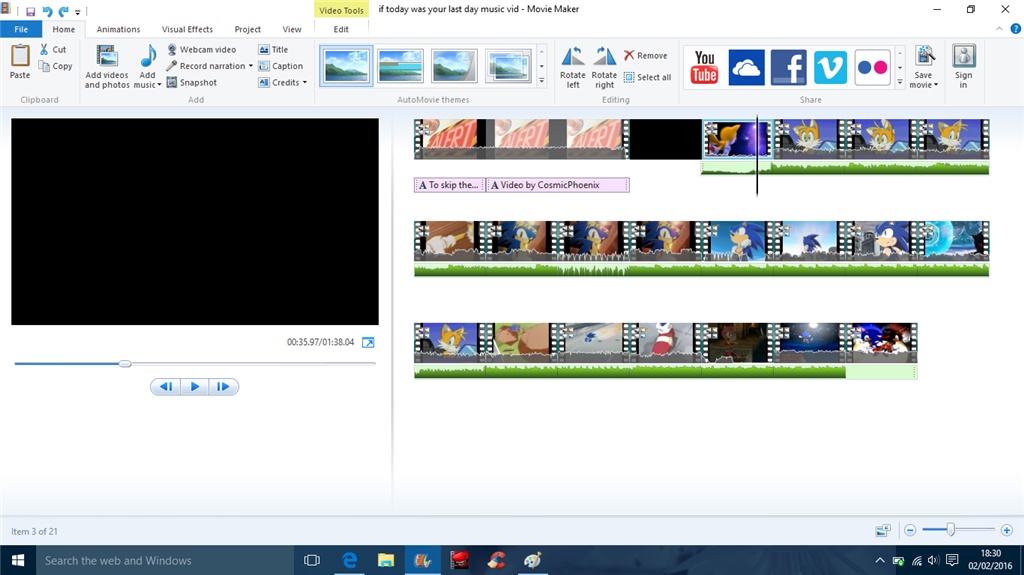
- #Microsoft Photos Windows Maker Movie Maker For#
- #Microsoft Photos Windows Maker Free Update In#
- #Microsoft Photos Windows Maker Windows 8.1 Release Of#


Microsoft Photos Windows Maker Movie Maker For
It was a part of Windows Essentials software suite and offered the ability to create and edit videos as well as to publish them on OneDrive, Facebook, Vimeo, YouTube, Windows Live Groups and Flickr. Com /en-us /help /18614 /windows-essentialsWindows Movie Maker (known as Windows Live Movie Maker for the 20 releases) is a discontinued video editing software program by Microsoft. VEGAS Movie Studio 15 allows you to add scenes and images into a production timeline and then edit them to create a single.Support. Windows Me, Windows XP, Windows Vista Video editing software for beginners.
Microsoft Photos Windows Maker Free Update In
The capture wizard also created DVR-MS type files from HDV tapes. The HD version in Premium and Ultimate editions of Windows Vista also added support for capturing from HDV camcorders. It included new effects and transitions, support for playback on the Xbox 360, and support for the DVR-MS file format that Windows Media Centre records television in. The Movie Maker in Windows XP Media Center Edition 2005 had more transitions and support for DVD burning.The next version of Movie Maker was released as part of Windows Vista and – like most Windows components – reported version number , same as Windows Vista itself. Version 2.1, a minor update, is included in Windows XP Service Pack 2. Version 2.0 was released as a free update in November 2002, and added a number of new features.

Movie Maker 2009 supported both Windows Vista and Windows 7. Certain advanced features were also removed from the software, such as image stabilization and the ability to record voice-overs. In addition, many features were removed.Also, Movie Maker's interface was redesigned in the Windows Live version to use a ribbon toolbar similar to Office 2007 it also added features such as "Auto Movie" and the ability to export videos directly to DVDs and YouTube. This was effectively a completely new application, as it could not read projects created by earlier versions and did not support custom XML transitions written for the previous versions.
Microsoft Photos Windows Maker Windows 8.1 Release Of
H.264/ MP4 became the default export format (replacing Windows Media Video, but still can be used), support for uploading to Vimeo was introduced (other sites were added to the list in the Windows 8.1 release of the suite), and hardware accelerated video stabilisation was also added as an exclusive feature for Windows 8 users. Support for recording voice-overs was restored, along with an audio mixer and integration with several free stock music services. 2012 With the discontinuation of the Windows Live brand (and the re-branding of the Windows Live suite as Windows Essentials), Windows Movie Maker 2012 was released in April 2012.
In each bar, clips can be added for editing (e.g., a. The storyboard/timeline consists of one 'Video' (with accompanying 'Audio' bar), one 'Music/Audio' bar, and one 'Titles/Credits' bar. When in Storyboard view, the video project appears as a film strip showing each scene in clips. Layout The layout consists of a storyboard view and a timeline view, collections for organizing imported video, and a preview pane. Like Windows Photo Gallery from Windows Essentials, Movie Maker is now replaced by the Microsoft Photos App included in Windows 10, which includes Video Editor (formerly Windows Story Remix).
In the XP version, import and real-time capture of video from an analog source such as a VCR, tape-based analog camcorder or webcam is possible. Importing of other container formats such as MP4/ 3GP, FLV and MOV, and AAC are also supported if the necessary codecs are installed and the system is running Windows 7 or later. Additionally, the Windows Vista Home Premium and Ultimate editions of Movie Maker support importing MPEG-2 Program streams and DVR-MS formats. The accepted formats for import are. The Video and Music/Audio bars can be "cut" to any number of short segments, which will play together seamlessly, but the individual segments are isolated editing-wise, so that for example, the music volume can be lowered for just a few seconds while someone is speaking.When importing footage into the program, a user can either choose to Capture Video (from camera, scanner or other device) or Import into Collections to import existing video files into the user's collections. Still images can also be imported into the timeline and "stretched" to any desired number of frames.
That is, at each point where the "Record" button was pressed, a new "clip" is generated, although the actual recording on the hard drive is still one continuous file. When importing from a DV tape, if the "Make Clips on Completion" option is selected, Windows Movie Maker automatically flags the commencement of each scene, so that the tape appears on the editing screen as a collection of short clips, rather than one long recording. Video support in Windows Image Acquisition was removed in Windows Vista, as a result importing analog footage in Windows Movie Maker is no longer possible.
Alternatively, most DV cameras allow the final AVI file to be recorded back onto the camera tape for high quality playback. A FireWire interface camera will allow recording and playback of images identical in quality to the original recordings if the video is imported and subsequently saved as DV AVI files, although this consumes disk space at about 1 gigabyte every five minutes (12 GB/Hr). Newer cameras using USB 2.0 give much better results. Fragmented AVI files result in jerky playback on the editing screen, and make the final rendering process much longer.Although it is possible to import digital video from cameras through the USB interface, most older cameras only support USB version 1 and the results tend to be poor — "sub VHS" — quality. The most reliable results can be obtained by adding an extra hard disk dedicated for scratch space, and regularly re-formatting/defragmenting it, rather than simply deleting the files at the end of the project. In the Windows Vista version, the "Make clips on completion" option has been removed — the clips are now automatically created during the capture process.The efficiency of the importing and editing process is heavily dependent on the amount of file fragmentation of the hard disk.
Once on the timeline, clips can be duplicated, split, repositioned or edited.


 0 kommentar(er)
0 kommentar(er)
